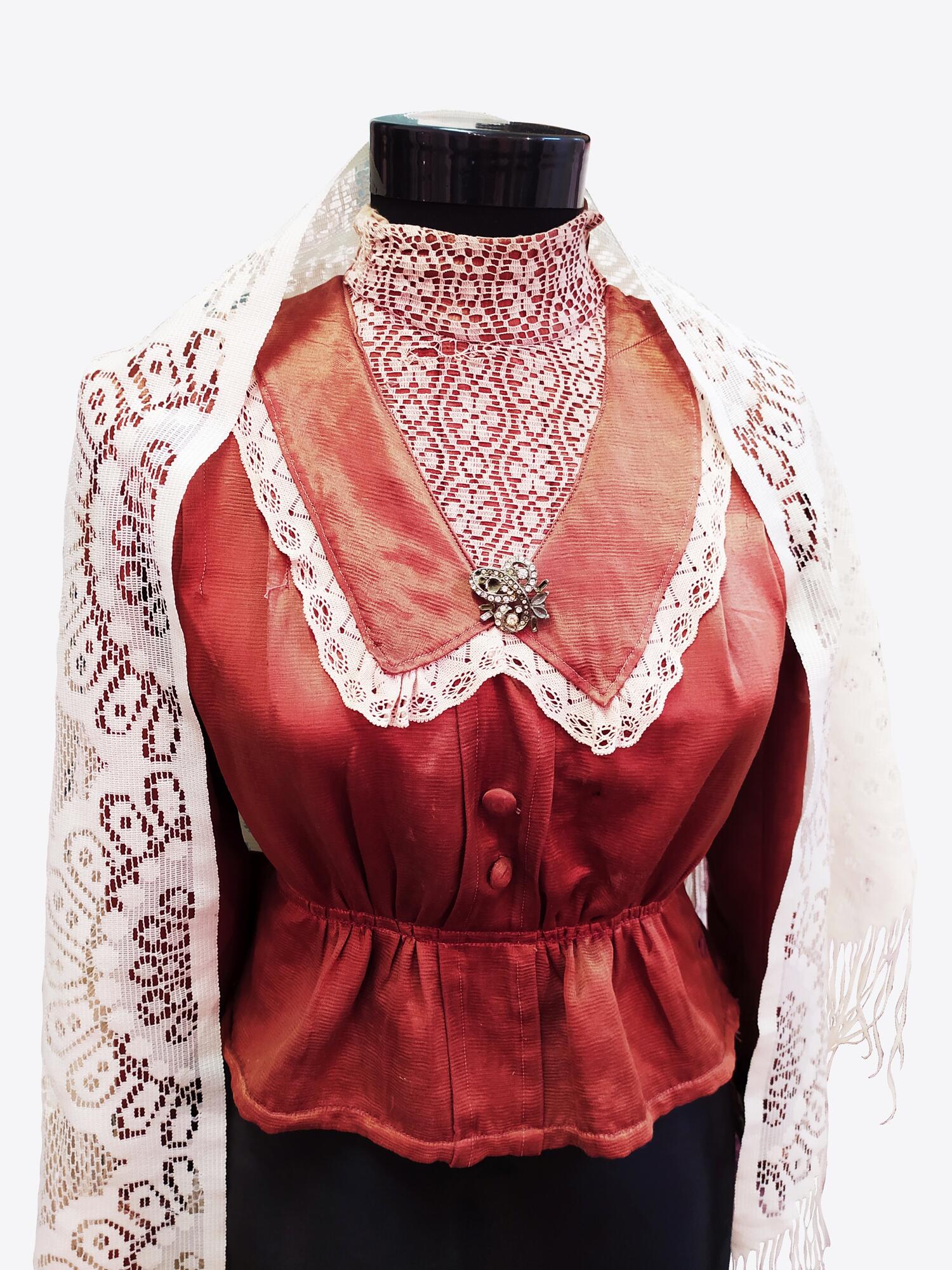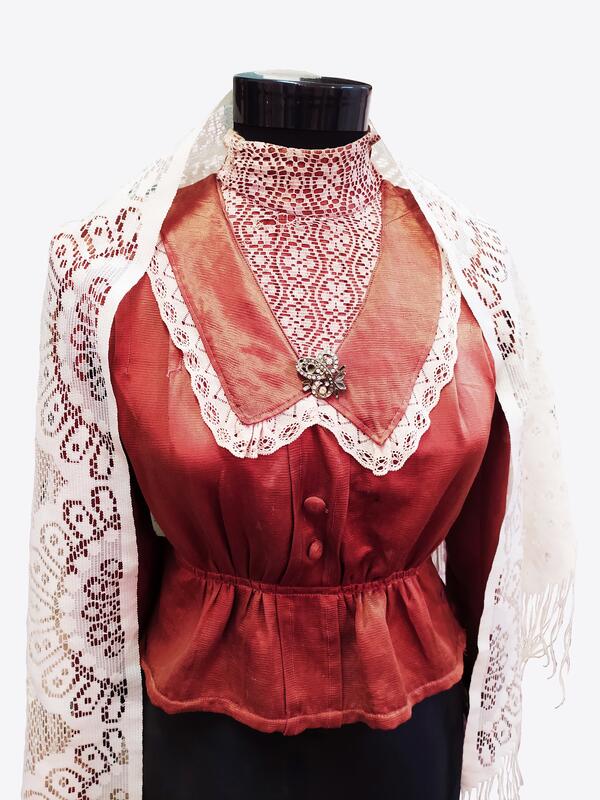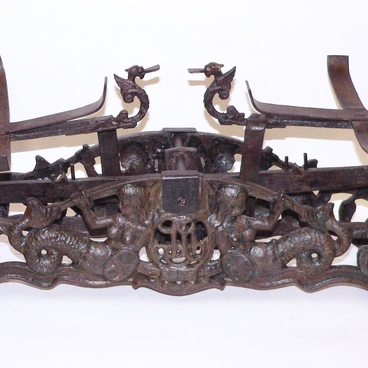The “kazachók” blouse is a festive fitted top with a stand-up collar and long sleeves. Despite the name, this type of clothing does not belong to the wardrobe of the Cossacks. This blouse presented in the exposition was sewn from a brown factory fabric and was laid on a cotton lining, which duplicates the cut of the blouse. Additionally, a drawstring belt is sewn at the waist. The neckline and lapels are trimmed with lace, and the collar is decorated with a lace ribbon.
Below the collar in the centre of the front panel, there is a fold on which are sewn two buttons covered with the same fabric. Curled cuffs extend upward and form a triangular edge with a sewn button. They are also decorated with lace along the edge; a brown fabric lining is visible on the underside.
Usually “kozachkí” were sewn from the same fabrics as holiday sundresses - from damask, silk, and various adornments. Preference was given to store-bought single-color fabrics in red, blue, brown, cream, pink, and light blue. The most popular was fabric embroidered with designs of vines and flowers. Cotton fabrics were used for lining. The “kozachkí” were trimmed in the same way as sundresses - with gold lace, fringe along the bottom of the sleeves and along the hem.
Despite the fact that an undershirt was worn under the “kozachók”, it sits on the figure quite flatteringly. It is possible this style gained great popularity because it helped rural fashionistas to get around the lack of a corset in their wardrobe — a well-cut “kozachók” could create the illusion of a more slender figure. It is apparent from the cut of the blouse that it fits tightly: The cinch at the waist and the reduced distance between the buttons indicate that this was the tightest point of the garment.
At the beginning of the 20th century, some peasant women were already wearing fitted blouses with a high collar over a sundress - in accordance with the new fashion. During this time, the “kozachók” style long remained a part of traditional garb, even when it had fallen out of fashion in the cities. In this period, there were various options for its construction: from taffeta, satin, or chintz. It was typically paired with a skirt or a sundress.
Below the collar in the centre of the front panel, there is a fold on which are sewn two buttons covered with the same fabric. Curled cuffs extend upward and form a triangular edge with a sewn button. They are also decorated with lace along the edge; a brown fabric lining is visible on the underside.
Usually “kozachkí” were sewn from the same fabrics as holiday sundresses - from damask, silk, and various adornments. Preference was given to store-bought single-color fabrics in red, blue, brown, cream, pink, and light blue. The most popular was fabric embroidered with designs of vines and flowers. Cotton fabrics were used for lining. The “kozachkí” were trimmed in the same way as sundresses - with gold lace, fringe along the bottom of the sleeves and along the hem.
Despite the fact that an undershirt was worn under the “kozachók”, it sits on the figure quite flatteringly. It is possible this style gained great popularity because it helped rural fashionistas to get around the lack of a corset in their wardrobe — a well-cut “kozachók” could create the illusion of a more slender figure. It is apparent from the cut of the blouse that it fits tightly: The cinch at the waist and the reduced distance between the buttons indicate that this was the tightest point of the garment.
At the beginning of the 20th century, some peasant women were already wearing fitted blouses with a high collar over a sundress - in accordance with the new fashion. During this time, the “kozachók” style long remained a part of traditional garb, even when it had fallen out of fashion in the cities. In this period, there were various options for its construction: from taffeta, satin, or chintz. It was typically paired with a skirt or a sundress.



